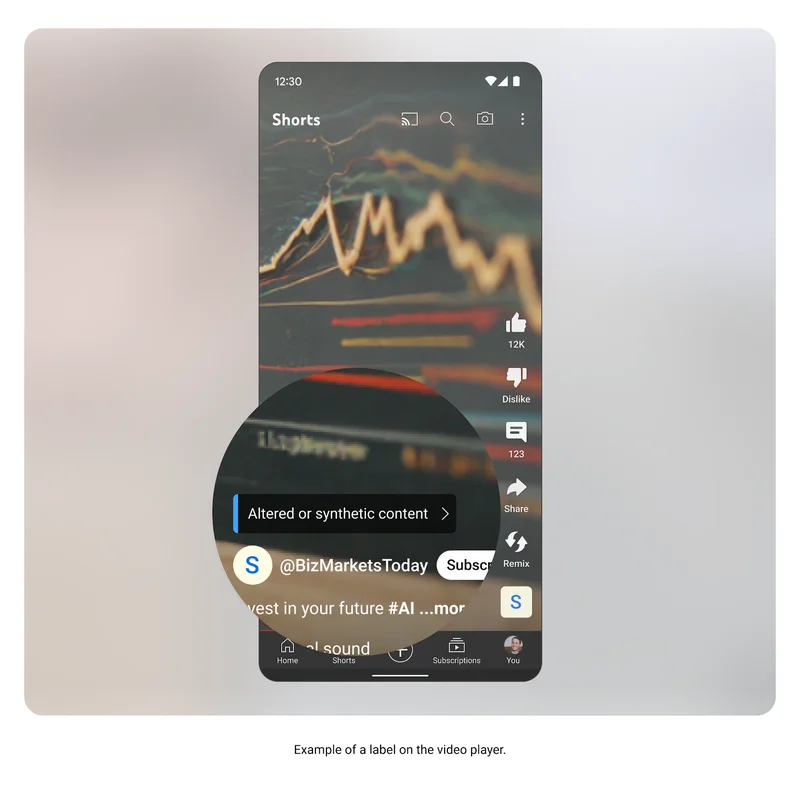YouTube Demands Creators Disclose AI Content in New Policy Update
The video-sharing platform to roll out its AI policy in the coming weeks.
Highlights:
- YouTube’s new policy requires creators to disclose AI-generated content.
- Disclosure is needed for face swapping, synthetic speech, and altering real-world footage.
- Sensitive topics like health and elections will have prominent disclosure labels.
- Enforcement measures may be implemented for creators who repeatedly fail to disclose AI content.
- The platform is revising its privacy process for AI-generated content impersonating identifiable features.
As Google continues its absolute rampage of a March rollout, penalizing websites with AI-generated content left and right, YouTube takes a much softer approach. The online video-sharing platform has brought a new tool to the Creator Studio, requiring content creators to specify when their content is generated or modified by AI.
If we are to take YouTube at its word, the AI disclosure is to help viewers identify when they are watching AI-generated content—whether the people, places, and events they are watching unfold are real, modified, or completely AI-generated.
Let’s take a closer look at YouTube’s AI policy, particularly the AI content requiring disclosure.
AI Content Requiring Disclosure
Building on its commitment to responsible AI innovation, YouTube has introduced disclosure requirements and content labels for AI-generated videos.
The policy encompasses the following:
- Swapping one face with another in videos.
- Creating synthetic speech for narration.
- Manipulating real-world footage to alter its appearance.
- Generating realistic depictions of fictional events.
These disclosures will have a content label visible in the video’s expanded version. On the other hand, AI-generated content on sensitive topics, such as health, elections, and finance, will feature a more prominent content label visible on the video itself.

YouTube has described this as a move toward espousing trust and transparency between the creators and their viewers.
AI-assisted Content Not Requiring an AI Disclosure
Since YouTube’s focus is on transparency for synthetic media that could be misconstrued as real, it won’t require an AI disclosure for content that will never be mistaken for the real thing.
This includes the following:
- Clearly Fictional Content: This includes animation, fantastical settings, or scenarios defying reality, such as an elephant made of leaves or any of the other unrealistic but captivating stuff Sora’s generated since its announcement.
- Minor Visual Alterations: Common adjustments like color correction, lighting filters, and non-distorting effects (background blur, vintage effects) are exempt.
- Cosmetic Enhancements: Beauty filters and other visual enhancements that don’t significantly alter the content’s core message are not required for disclosure.
A Weeks-Long Rollout and Enforcement Measures
The content labels will appear progressively across all YouTube platforms (mobile app first, then desktop and TV) over the coming weeks.
Creators will have time to adjust to the new process. However, YouTube may implement enforcement measures in the future for creators who repeatedly fail to disclose AI-generated content.
Instead of demonetizing instances where misleading or potentially confusing synthetic content is uploaded, YouTube will reserve the right to add disclosure labels even without the creator’s initial inclusion.
While the platform has a robust impersonation policy, it is currently revising its privacy process to allow individuals to request the removal of AI-generated content impersonating their identifiable features (voice or face).
An AI Disclosure for Transparency: What About Quality?
With YouTube’s new focus on transparency around AI-generated content, creators need a partner who understands both compelling visuals and ethical considerations. Search Berg’s video design services can help you with that.
Stay tuned for educational resources on YouTube’s AI policy, and seek our assistance for high-quality animated videos with the perfect voice-over and message for brand engagement.














